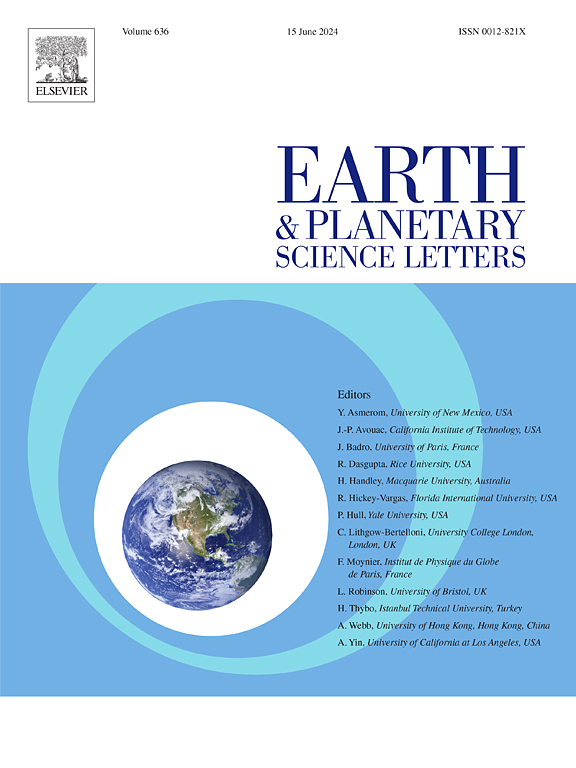The relationship between gravity anomalies and topography in the Pacific Ocean and its implications for flexural isostasy, mantle viscosity and dynamics
IF 4.8
1区 地球科学
Q1 GEOCHEMISTRY & GEOPHYSICS
引用次数: 0
Abstract
Mantle dynamics in the interior and flexural isostasy of the lithosphere contribute to Earth's topography and gravity fields at different wavelengths, yet the actual transition wavelength between mantle dynamics and flexural isostasy and their relative contribution are not well quantified. A critical parameter in determining the transition is Earth's viscosity structure which controls both the response of the plates to loading and mantle flow models. Here, we present the first study to use the observed relationship between topography and the gravity anomaly (admittance) at wavelengths from ∼200 km to ∼5000 km in the Pacific Ocean to determine the nature of the transition and to constrain mantle viscosity based on combined plate flexure and mantle flow models. The Pacific Ocean, as well as global, data suggest a transition wavelength of ∼600 km such that flexural isostasy dominates at wavelengths shorter than ∼600 km, while mantle dynamics also contributes significantly to the topography and gravity for wavelengths longer than ∼600 km. Mantle flow models based on different seismic tomography models have been used to determine the main controls on the dynamic admittance at wavelengths between 600 and 5000 km for the Pacific. We find that the observed admittance is best explained by a temperature-dependent viscosity mantle and a weak asthenosphere. These results are used to separate the contributions of flexural isostasy and mantle dynamics at long wavelength and to examine their implications for the amplitude of dynamic topography in the Pacific Ocean.
求助全文
约1分钟内获得全文
求助全文
来源期刊

Earth and Planetary Science Letters
地学-地球化学与地球物理
CiteScore
10.30
自引率
5.70%
发文量
475
审稿时长
2.8 months
期刊介绍:
Earth and Planetary Science Letters (EPSL) is a leading journal for researchers across the entire Earth and planetary sciences community. It publishes concise, exciting, high-impact articles ("Letters") of broad interest. Its focus is on physical and chemical processes, the evolution and general properties of the Earth and planets - from their deep interiors to their atmospheres. EPSL also includes a Frontiers section, featuring invited high-profile synthesis articles by leading experts on timely topics to bring cutting-edge research to the wider community.
 求助内容:
求助内容: 应助结果提醒方式:
应助结果提醒方式:


